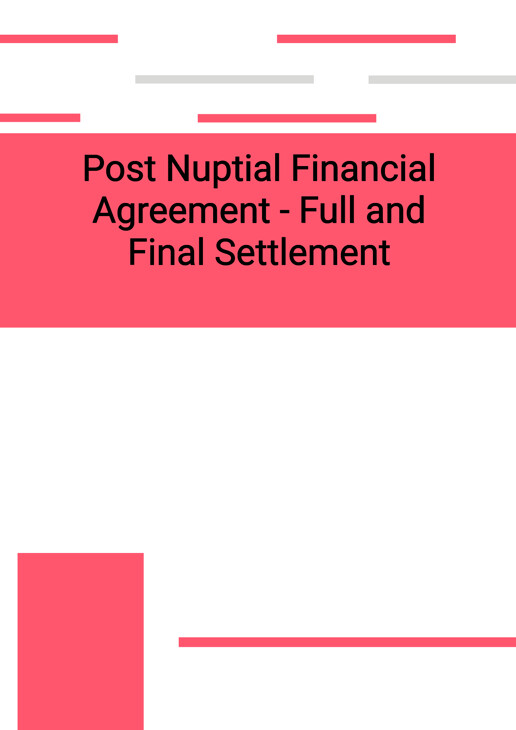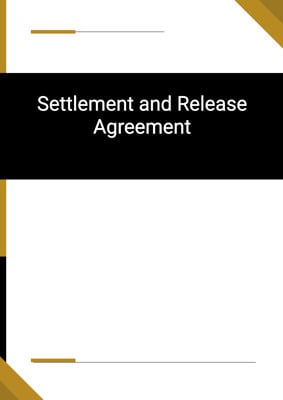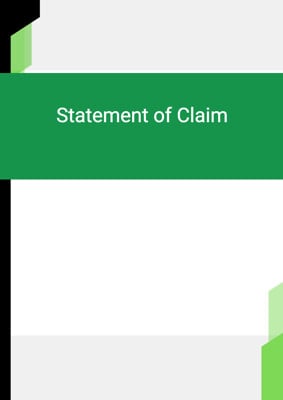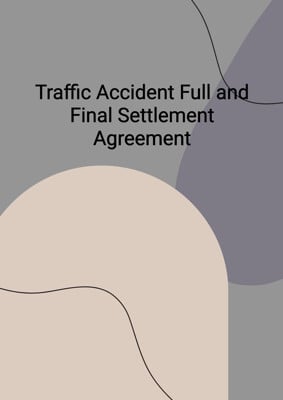
Post Nuptial Financial Agreement - Full and Final Settlement
No Child
This document can be used as a financial agreement template. This is an agreement between two parties with no children on financial arrangement in the event that their relationship breaks down in the future. The cohabitation property to be transferred to wife. The husband may pay maintenance / alimony to wife.
How to Tailor the Document for Your Need?
01
Create Document
Fill in the details of the parties. You can click the "Fill with Member’s Information" button to complete it with information saved to your account.
02
Fill Information
Please fill in any additional information by following the step-by-step guide on the left hand side of the preview document and click the "Next" button.
03
Get Document
When you are done, click the "Get Document" button and you can download the document in Word or PDF format.
04
Review Document
Please get all parties to review the document carefully and make any final modifications to ensure that the details are correct before signing the document.
Document Preview
Document Description
The 'Post Nuptial Financial Agreement - Full and Final Settlement' is a legally binding document that outlines the division of property and financial resources in the event of a breakdown in the relationship between a husband and wife. The agreement is made between the husband and wife, who were lawfully married on a specific date. It is important to note that the enforceability of post-nuptial agreements may vary in different jurisdictions and legal advice should be sought.
The agreement begins with a preamble that establishes the background and intentions of the parties. It states that the parties have maintained open communication and have enjoyed a harmonious relationship. The purpose of the agreement is to manage their property affairs and avoid litigation in the event of a relationship breakdown.
The terms of the agreement are then outlined in detail. It is stated that the agreement will be binding on the heirs, executors, administrators, and assignees of each party. The assets and liabilities of the parties are set out in an annexure attached to the agreement, with the parties confirming their agreement with the estimated values.
One of the key provisions of the agreement is the transfer of cohabitation property. The husband agrees to transfer his interest in the cohabitation property solely to the wife, who will become the sole registered proprietor. The wife assumes all liabilities for the transfer and subsequent repair and maintenance of the property. Until the transfer is completed, both parties are responsible for paying government rates and water rates.
The agreement also addresses financial arrangements, including maintenance and financial self-sufficiency. The husband agrees to pay alimony or maintenance to the wife on a periodic basis, while both parties agree to waive any right to seek or receive spousal support in the event of a breakdown of the marriage. Each party acknowledges that their financial status is sufficient to meet their reasonable needs.
Miscellaneous provisions state that the wife will be solely entitled to the cohabitation property, insurance policies will remain the sole asset of the policy holder, and each party will be solely liable for any debts and liabilities in their name. The agreement also requires both parties to obtain independent legal advice before signing.
The agreement concludes with provisions regarding taxes, claims for provision out of the estate of a deceased party, notices, governing law and jurisdiction, and further assurance. Each party agrees to do all things necessary to give full effect to the agreement.
The agreement is executed by both parties and witnessed by individuals whose names are printed. An annexure is included, which details the assets and agreed values, as well as a statement from the solicitor certifying that they provided independent legal advice to their client.
Overall, this agreement is a comprehensive and detailed document that covers various aspects of property division and financial arrangements in the event of a relationship breakdown.
How to use this document?
Guidance for using the 'Post Nuptial Financial Agreement - Full and Final Settlement':
1. Seek legal advice: Before using this agreement, it is important to consult with a local counsel to ensure its enforceability in your jurisdiction and to understand its implications.
2. Gather necessary information: Collect all relevant information, including the names and addresses of both parties, the date of the marriage, and details of any children from the relationship.
3. Understand the purpose: Familiarize yourself with the purpose of the agreement, which is to manage property affairs and avoid litigation in the event of a relationship breakdown.
4. Complete the agreement: Fill in the required information in the agreement, including the names and addresses of both parties, and the date of the agreement.
5. Annexure: Attach the annexure that lists the assets and agreed values as outlined in the agreement.
6. Transfer of cohabitation property: Follow the steps outlined in the agreement to transfer the husband's interest in the cohabitation property solely to the wife. Ensure all necessary acts, documents, and signatures are completed.
7. Financial arrangements: If applicable, determine the amount of alimony or maintenance to be paid by the husband to the wife on a periodic basis. Both parties should waive any right to seek or receive spousal support.
8. Independent legal advice: Each party should obtain independent legal advice from a legal practitioner before signing the agreement. This ensures that both parties fully understand the implications and effects of the agreement.
9. Taxes: Both parties should sign all necessary documents and take all required actions to minimize the burden of stamp duty or taxes and obtain any applicable roll over relief.
10. Claims for provision out of the estate: Consider whether to release rights to make an application in relation to the estate of the other party. Seek legal advice and follow the necessary steps outlined in the agreement.
11. Notices: All communications between the parties must be in writing and can be delivered personally, posted, faxed, or sent by email.
12. Governing law and jurisdiction: Understand that the agreement is governed by the laws of the jurisdiction state and that each party submits to the non-exclusive jurisdiction of the courts.
13. Further assurance: Both parties should be willing to do all things necessary, including executing documents, to give full effect to the agreement.
Please note that this guidance is for informational purposes only and does not constitute legal advice. It is recommended to consult with a legal professional for specific guidance tailored to your situation.







